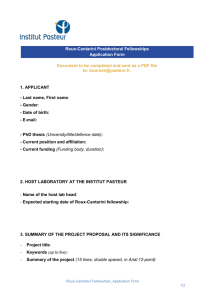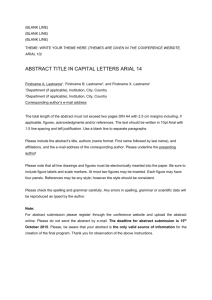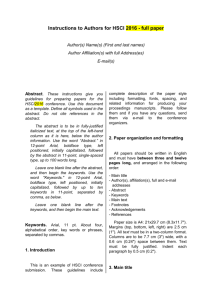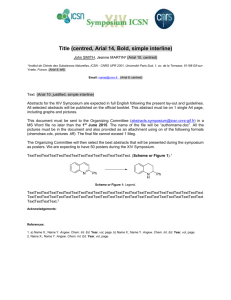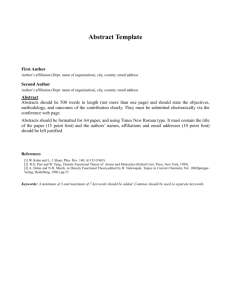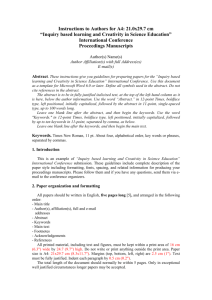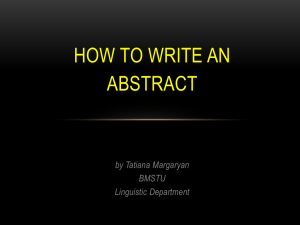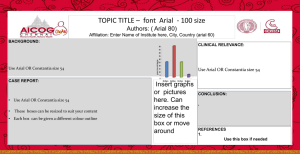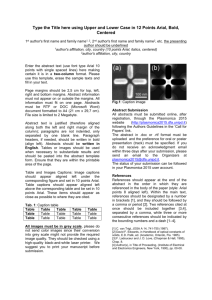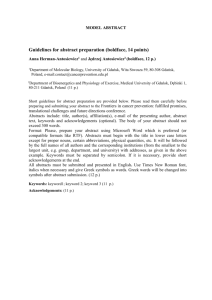Instructions to Authors for A4: 21
advertisement
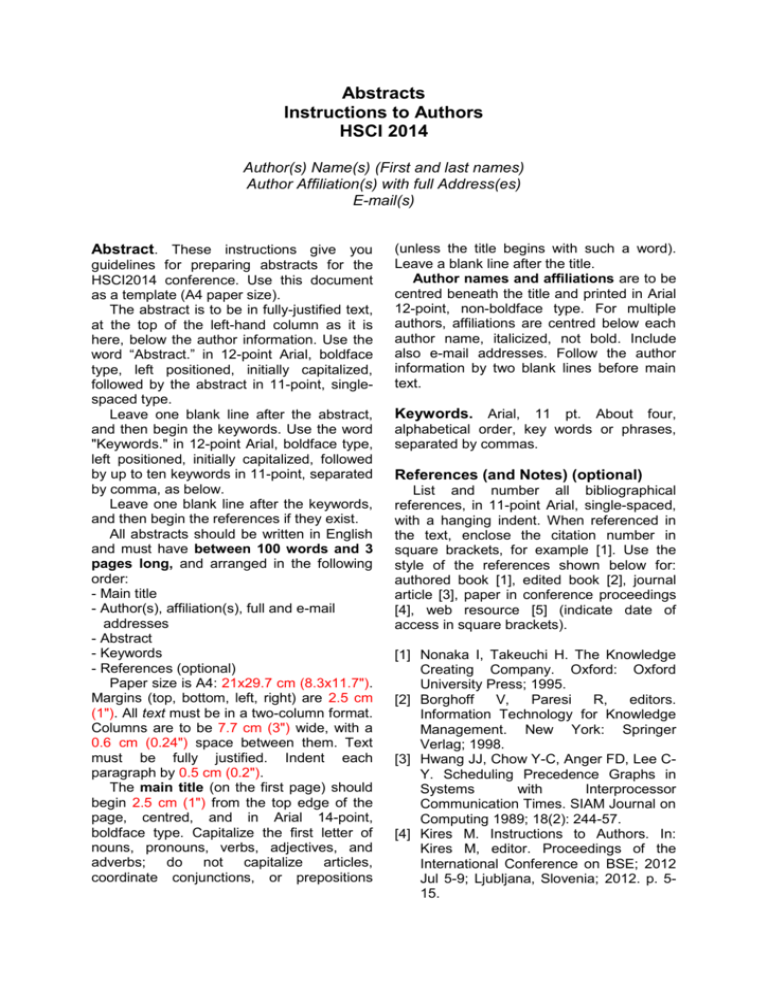
Abstracts Instructions to Authors HSCI 2014 Author(s) Name(s) (First and last names) Author Affiliation(s) with full Address(es) E-mail(s) Abstract. These instructions give you guidelines for preparing abstracts for the HSCI2014 conference. Use this document as a template (A4 paper size). The abstract is to be in fully-justified text, at the top of the left-hand column as it is here, below the author information. Use the word “Abstract.” in 12-point Arial, boldface type, left positioned, initially capitalized, followed by the abstract in 11-point, singlespaced type. Leave one blank line after the abstract, and then begin the keywords. Use the word "Keywords." in 12-point Arial, boldface type, left positioned, initially capitalized, followed by up to ten keywords in 11-point, separated by comma, as below. Leave one blank line after the keywords, and then begin the references if they exist. All abstracts should be written in English and must have between 100 words and 3 pages long, and arranged in the following order: - Main title - Author(s), affiliation(s), full and e-mail addresses - Abstract - Keywords - References (optional) Paper size is A4: 21x29.7 cm (8.3x11.7"). Margins (top, bottom, left, right) are 2.5 cm (1"). All text must be in a two-column format. Columns are to be 7.7 cm (3") wide, with a 0.6 cm (0.24") space between them. Text must be fully justified. Indent each paragraph by 0.5 cm (0.2"). The main title (on the first page) should begin 2.5 cm (1") from the top edge of the page, centred, and in Arial 14-point, boldface type. Capitalize the first letter of nouns, pronouns, verbs, adjectives, and adverbs; do not capitalize articles, coordinate conjunctions, or prepositions (unless the title begins with such a word). Leave a blank line after the title. Author names and affiliations are to be centred beneath the title and printed in Arial 12-point, non-boldface type. For multiple authors, affiliations are centred below each author name, italicized, not bold. Include also e-mail addresses. Follow the author information by two blank lines before main text. Keywords. Arial, 11 pt. About four, alphabetical order, key words or phrases, separated by commas. References (and Notes) (optional) List and number all bibliographical references, in 11-point Arial, single-spaced, with a hanging indent. When referenced in the text, enclose the citation number in square brackets, for example [1]. Use the style of the references shown below for: authored book [1], edited book [2], journal article [3], paper in conference proceedings [4], web resource [5] (indicate date of access in square brackets). [1] Nonaka I, Takeuchi H. The Knowledge Creating Company. Oxford: Oxford University Press; 1995. [2] Borghoff V, Paresi R, editors. Information Technology for Knowledge Management. New York: Springer Verlag; 1998. [3] Hwang JJ, Chow Y-C, Anger FD, Lee CY. Scheduling Precedence Graphs in Systems with Interprocessor Communication Times. SIAM Journal on Computing 1989; 18(2): 244-57. [4] Kires M. Instructions to Authors. In: Kires M, editor. Proceedings of the International Conference on BSE; 2012 Jul 5-9; Ljubljana, Slovenia; 2012. p. 515. [5] Schulzrinne H, Casner SL, Frederick R, Jacobson V. RTP: A Transport Protocol for Real-Time Applications. Internet Engineering Task Force; 2001. http://www.ietf.org/internet-drafts/ draft-ietf-avt-rtp-new-10.txt [visited 31Oct-2001]
